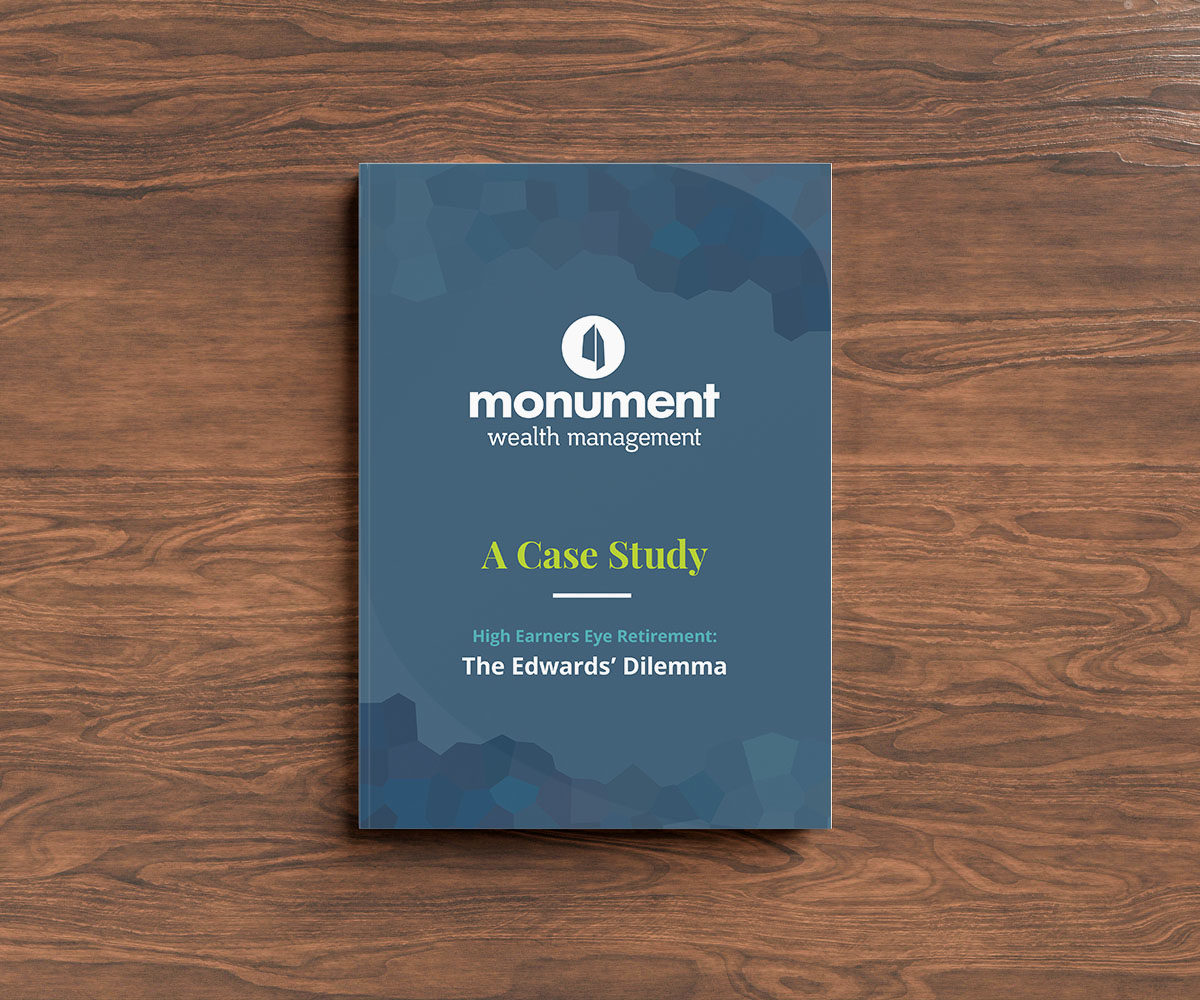Monument Wealth Management Articles
How Momentum Investing is Winning in the Long Term

Share on your favorite platform, or by email
Everyone says “buy low, sell high” for seemingly obvious reasons. But what if you found out some investors were applying a slight variation of that advice…and often seeing great returns doing it?
These investors exist, and they follow a strategy called momentum investing.
Momentum investing involves making long-term investments in assets showing an upward trend. The rationale behind this strategy: an established trend is likely to continue. Thus, a momentum investor buys high and sells higher.
But momentum investing isn’t just a “hey, this stock looks like it’s doing well, I’ll throw my money at it” strategy. Below, we’ll explore why a momentum investing strategy could work when you do it right.
Momentum means do more of what’s working–it represents the capital flow
If an asset is on the rise, there can be some sense in jumping in on that trend. Those trends, after all, represent the flow of capital. Instead of trying to fight that flow, you might potentially be better off joining it—assuming you do the proper analysis and have specific rules set in your Model to guide you in entering and exiting the investment at an appropriate time.
These buy and sell disciplines are meant to eliminate human error and biases often caused by trying to time the market. A disciplined approach does not mean flawless, it means probabilistic–not all trades/signals work but over time, they can add value.
Momentum allows exposure to secular trends
A “secular” trend or market is one that is likely to continue over a long period of time. Momentum investing’s bread and butter is profiting off trends, making it perfect for taking advantage of, well, secular trends.
The various sub-sectors of the tech industry is a good example. Certain technologies across sectors, such as autonomous vehicles, aren’t likely to slow down anytime soon. Yes, there may be short-term corrections, but successful momentum investors should have the proper rules set in their Model that allow them to ride out the short-term corrections without worry.
Either way, we aren’t regressing technologically and momentum investing strategies can get you in on these trends.
Momentum investing can help investors avoid “catching falling knives”
Trying to time a market drop to buy in at the lowest point can be dangerous, just like trying to catch a falling knife. You might get in right at the bottom—or you might miscalculate and ride the position down much further.
A momentum investor might see a downtrend and decide to hold cash and wait for positive momentum to reassert itself. While this may lead to some opportunity cost, it can allow an investor to minimize larger drawdowns as there are some periods where negative momentum can last for a long time (think 2007/2008).
Momentum investing is not foolproof, but it helps investors get exposure to themes inside of an index
Nothing is foolproof—especially momentum investing, which can be tough to get right.
However, momentum investing helps you get in on themes inside of indexes because, well, themes are going to manifest as trends on charts. So, momentum investing can work quite well as a supplement to your main approach.
For example, one may theoretically pick some steady blue chips like Coca-Cola, Disney, P&G or a broad based passive ETF as the base of their strategy. These firms could do well in the background. Then, you can try getting in on some thematic momentum (think SaaS, Cloud Computing, Work from Home stocks, A.I., Fintech, etc.) to see if you can earn some higher returns. At best, you could see some nice profits. At worst, if you do it right, you might lose money you can afford to lose.
In short: momentum investing can be helpful on its own, but adding it to your core strategy is even better due to how it can perform well, quietly in the background of your other investment activities.
Momentum can “stall out” when the market shifts from one theme to another
Themes aren’t forever. They might have tons of momentum for a while, but eventually, people pull their capital out of these themes. Said themes sputter out either gradually or suddenly.
Think of tech in the 90s (specifically, the dot-com bubble), finance during 2004-2007ish, and cyclicals from 2009-2014–plenty of momentum for a while, but all good things come to an end. Today, we’re seeing a run in tech, especially after the pandemic, but that too shall eventually slow down.
Although momentum investing is a technical strategy, there is some benefit in keeping an eye on themes that are ending and starting. Pulling out of a big momentum trend before it ends can maximize the capital you have in order to gain exposure to the next big thing.
Is momentum investing worth a try?
Momentum investing is counterintuitive—you won’t hear most finance experts saying buy once something has positive momentum and sell when that momentum wanes. Some investors and traders have seen great success, but only by sticking to some rules and keeping their emotions out of things. While it’s not foolproof, it can work well as an overlay. So, is it right for you?
We can help you figure that out. At Monument Wealth Management, we work hand-in-hand with you to co-create your very own Private Wealth Design. We take the time to discover your needs and goals and then create a plan to help you get there, always answering YOUR specific questions, not everyone else’s. Our team’s unfiltered opinions and straightforward advice helps properly frame all risk, remove hassle, and empower you to have more control over your time and options. Knowing if a strategy, like momentum investing, is in your best interest is our job. Our firm is dedicated to providing our clients clarity on their financial and life decisions, and removing the anxiety of the unknown. Ready to see if we’d be a good fit?

It’s time to find clarity around your finances and remove the anxiety of the unknown.
Read our case study, “High Earners Eye Retirement,” to see how we helped one of our clients plan for the long term.
Ready for straightforward, unfiltered opinion and tailored advice for YOUR questions, not everyone else’s?
IMPORTANT DISCLOSURE INFORMATION
Please remember that past performance is no guarantee of future results. Different types of investments involve varying degrees of risk, and there can be no assurance that the future performance of any specific investment, investment strategy, or product (including the investments and/or investment strategies recommended or undertaken by Monument Capital Management, LLC [“Monument”]), or any non-investment related content, made reference to directly or indirectly in this blog will be profitable, equal any corresponding indicated historical performance level(s), be suitable for your portfolio or individual situation, or prove successful. Due to various factors, including changing market conditions and/or applicable laws, the content may no longer be reflective of current opinions or positions. Moreover, you should not assume that any discussion or information contained in this blog serves as the receipt of, or as a substitute for, personalized investment advice from Monument. To the extent that a reader has any questions regarding the applicability of any specific issue discussed above to his/her individual situation, he/she is encouraged to consult with the professional advisor of his/her choosing. No amount of prior experience or success should be construed that a certain level of results or satisfaction will be achieved if Monument is engaged, or continues to be engaged, to provide investment advisory services. Monument is neither a law firm nor a certified public accounting firm and no portion of the blog content should be construed as legal or accounting advice.
A copy of Monument’s current written disclosure Brochure discussing our advisory services and fees is available for review upon request or at www.monumentwealthmanagement.com/disclosures. Please Note: Monument does not make any representations or warranties as to the accuracy, timeliness, suitability, completeness, or relevance of any information prepared by any unaffiliated third party, whether linked to Monument’s website or blog or incorporated herein, and takes no responsibility for any such content. All such information is provided solely for convenience purposes only and all users thereof should be guided accordingly.
Historical performance results for investment indices, benchmarks, and/or categories have been provided for general informational/comparison purposes only, and generally do not reflect the deduction of transaction and/or custodial charges, the deduction of an investment management fee, nor the impact of taxes, the incurrence of which would have the effect of decreasing historical performance results. It should not be assumed that your Monument account holdings correspond directly to any comparative indices or categories. Please Also Note: (1) performance results do not reflect the impact of taxes; (2) comparative benchmarks/indices may be more or less volatile than your Monument accounts; and, (3) a description of each comparative benchmark/index is available upon request.
Please Remember: If you are a Monument client, please contact Monument, in writing, if there are any changes in your personal/financial situation or investment objectives for the purpose of reviewing/evaluating/revising our previous recommendations and/or services, or if you would like to impose, add, or to modify any reasonable restrictions to our investment advisory services. Unless, and until, you notify us, in writing, to the contrary, we shall continue to provide services as we do currently. Please Also Remember to advise us if you have not been receiving account statements (at least quarterly) from the account custodian.